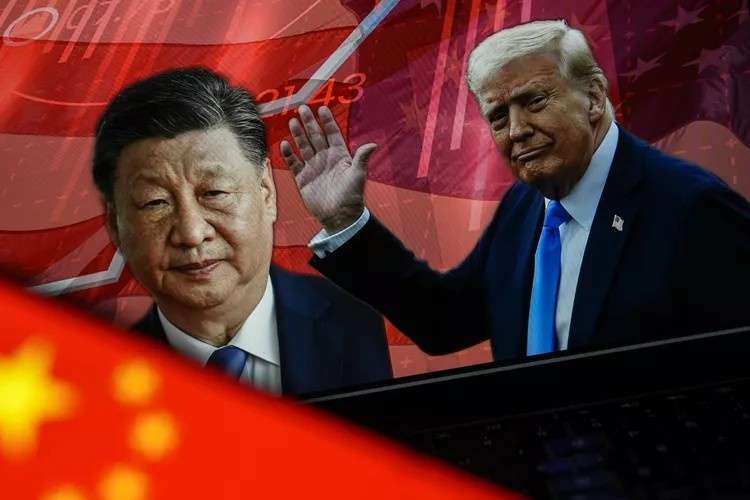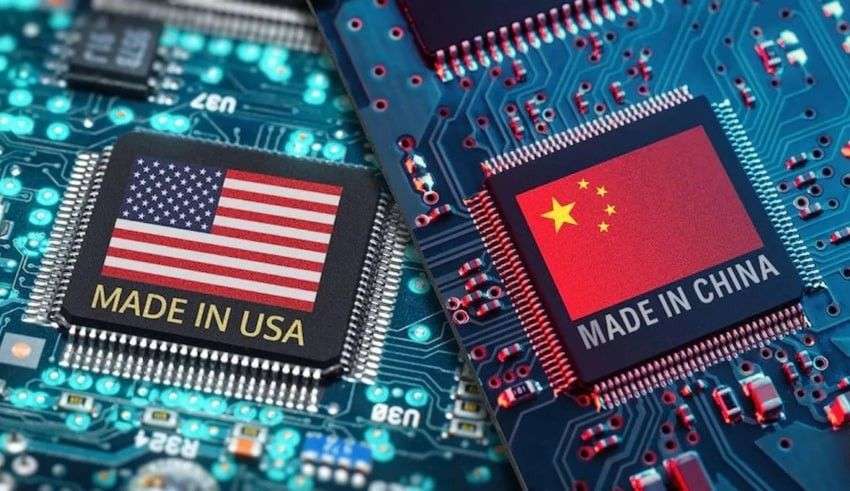In 2025 the semiconductor standoff between the United States and China has escalated from a trade dispute to a strategic competition, chips are front and center in the race for domination over artificial intelligence, defence technologies, quantum computing, and economic ability. And as the United States pursues increased and more sophisticated export controls, and China accelerates its push toward domestic chips innovation, the organizational structure of the global technology landscape is upended. Competition is no longer merely a question of market assets, but a question of geostrategic leverage, a matter which may affect all major economies and industries throughout the world.
The tech competition between the United States and China has created significant disruption across global semiconductor supply chains. Since 2022, U.S. export controls have limited the export of advanced chips and associated equipment, which resulted in China taking the reciprocal measure of banning U.S. chip maker Micron and significantly restricting its exports of critical minerals gallium and germanium, of which China has over 90% and 60% of the global market, respectively. These two sets of activities have impacted various industries starting from electronics to automotive and have resulted in everything from cost increases to delayed deliveries. Countries like Japan, South Korea, and the Netherlands are caught in the middle since they are so embedded into the chip value chain, while non-traditional chip hubs like India and Vietnam are starting to gather momentum as the world focuses on supply chain diversification.
The Race for Tech Sovereignty
To reduce risks and lessen reliance on China, the United States and its allies will now “friend-shore” more, which means relocating semiconductor manufacturing and research industries to partner countries that are “trusted,” facilitating a reduction of supply chains. Notable examples of coordinated actions include: The U.S.’s partnerships with Japan, South Korea, and the Netherlands on export controls and technology. Narrowed transatlantic cooperation through the EU-U.S. Trade and Technology Council that establishes an EU target of €43 billion on semiconductor investments and the U.S. growing the $52bill CHIPS and Science Act to rebuild domestic manufacture. The chip war is working to decouple global technology ecosystems into separate supply chains, standards, and innovation ecosystems. Because of this, costs are increasing, and it may provide headwinds to progress globally.

As the U.S.-China chip war ramps up, countries are changing their strategies in different ways. China is moving away from trying to replicate U.S. leadership in traditional silicon chips, and directing its attention towards next-generation photonic, 2D, and neuromorphic chips, which it is labelling as national strategic assets to avoid U.S. export controls. South Korea and the Netherlands, U.S. allies, are trying to balance U.S. security needs with their own access to the Chinese market which is worth an estimated 300 billion USD per year. These key allies are carefully restricting their critical chip exports to China while attempting to further the economic offsets with U.S. and EU. Meanwhile, new players such as India and Vietnam are taking advantage of supply chain shifts by promoting themselves as alternative semiconductor ecosystems, which encourages joint ventures and technology partnerships with chip packaging and mature process nodes.
Artificial Intelligence and Next-Generation Innovation
The U.S.-China chip war is also a race for dominance over future technology, particularly artificial intelligence (AI), quantum computing, and advanced weapon systems. The training and deployment of AI rely heavily on leading GPUs and tensor processing units (TPUs), such as those by NVIDIA and AMD. AI model training is incredibly GPU-intensive more than 70% of all world AI in 2023 used NVIDIA’s A100 and H100 (that are now restricted from being exported to China). It is easy to conceptualize both civilian applications and national security systems that could use the same A100 or H100 chips, and what may be at stake. For instance, hypersonic missile guidance systems, autonomous vehicles, autonomous drones, etc. Access to these chips is an imperative for any nation states’ national security.

Risk of Tech Fragmentation
The decoupling of supply chains in the U.S. and China is likely to bifurcate the global tech ecosystem. Analysts predict that the complete separation of semiconductor manufacturing may reduce global GDP by nearly $1 trillion over the next decade. Countries in crucial links within the chip value chain (e.g., ASML with extreme ultraviolet / EUV lithography, TSMC with advanced fabrication, Samsung with DRAM and logic chips), like Japan, Taiwan, and South Korea, now face pressure to “choose sides.”
As trust declines, global standards-setting organizations, such as the IEEE, or the International Organization for Standardization (ISO), are becoming more of a battleground for influence, while China increasingly promotes and presses technological standards in the Global South. As the burden of compliance (such as the requirements to obtain licenses for exporting the developed technology or new anti-foreign sanctions laws) rises, R&D collaboration becomes harder, which slows the pace of global Innovation, but particularly in areas like AI, Internet of Things, and 6G telecommunications.
As the U.S. and China war escalates, the world sits at a historic crossroads: will the semiconductor competition split global technology into separate blocs, or can diplomacy reconcile security interests with a shared interest in innovation and development? This contest will inform not only who holds the economic power of the future, but how and if the global tech ecosystem retains a collaborative framework or sets into permanent, separate parts.
Frequently Asked Questions
1. Why is the US-China chip war important?
The chip war impacts global innovation, national security, and economic stability, as semiconductors power everything from AI to defense systems.
2. How are countries like India and Vietnam responding?
India and Vietnam are leveraging the disruption by promoting themselves as alternative chip hubs to attract investments and partnerships.
3. What are the global risks of tech decoupling?
Tech decoupling may slow innovation, increase costs, reduce GDP, and divide the world into separate technology blocs with competing standards.

